So much of my collecting journey has led me to focus on utilitarian watches with real-world use in specialized fields. This preference—paired with my lifelong love for aviation—means that I’ve crossed paths with a ton of pilot watches. There’s just something so fascinating about wristwatches existing in the complex world of flight operations, and the way pilots have integrated them into that environment throughout history. While the world of pilot watches has been heavily luxury-washed for cosplayers with deep pockets, some real purpose-built options still exist out there, at accessible prices. The Marathon Navigator is exactly one of those pieces. And this became undoubtedly clear when we sat down to speak with a retired naval aviator and EA-18G pilot who ranked the Navigator as one of his top watch choices for his time in the field.

In my book, this is about as good as it gets. Things become even more interesting when you track down the history of this watch’s development. Originally designed in collaboration with Kelly Air Force Base in 1986, the earliest Marathon Navigator watches were sold through government contracts. More recently, after considering today’s appetite for mil-spec watches, Marathon refreshed the model with a stainless steel case and screw-down crown—a watch that’s still on my wish list. This background paired with the ease-of-access has made the Marathon Navigator a no-brainer for both hardcore and casual mil-spec watch collectors. That goes for both the early resin case examples, vintage models, and the latest versions in steel.

Case
The watch pictured here is a second-generation Marathon Navigator with a composite fiber case (plastic-like) measuring in at 41mm in diameter and 48mm lug to lug. The result is an incredibly light and durable package that comes in at just 40-ish grams on a nylon strap. Other upgrades on this one include a sapphire crystal, a stainless steel crown, and a stainless steel case back with an easy-access battery hatch. One issue I had with this model was the overall stickiness of the rotating bezel, which wasn’t of the clicking variety. Otherwise, it was a useful feature that helped with quickly tracking a second time zone.
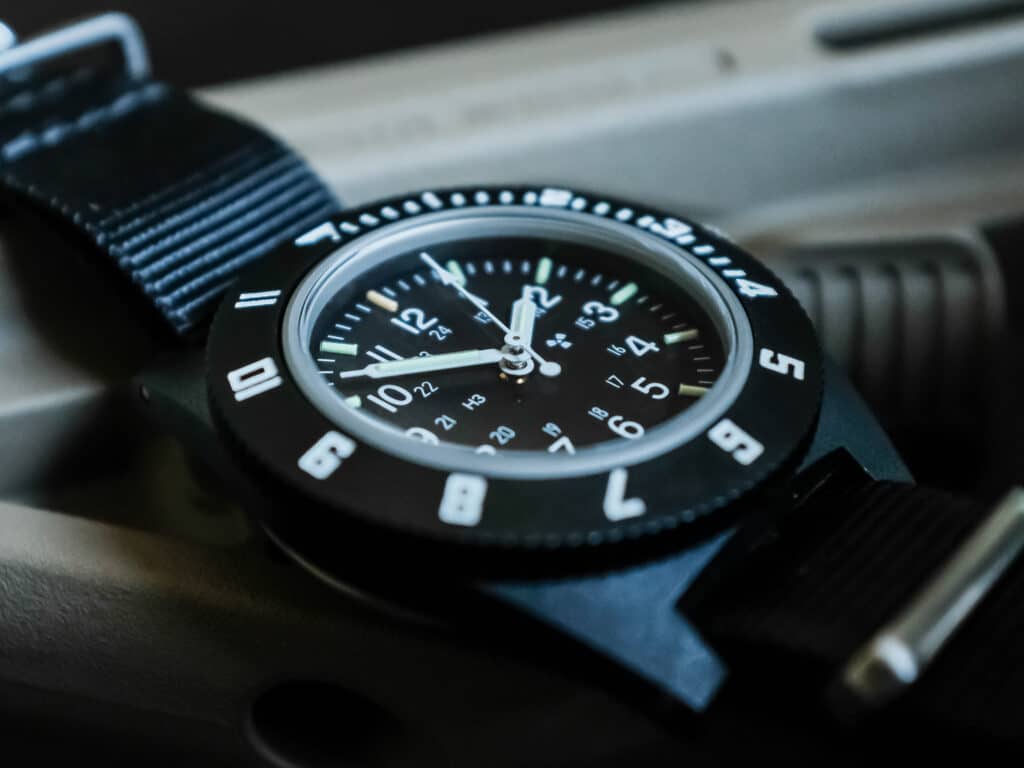
While water resistance on the newest stainless steel versions has been bumped up to 100m, this model with a push/pull crown gives you 60m. That’ll get you what you need, honestly, even though I welcome the change Marathon brought to the newer models. As is the case with many mil-spec watches, this Marathon model has fixed spring bars—so it’s only going to be pass-through fabric or leather straps if you go for this second-gen version. Even though some still dismiss the resin case as cheap, there’s always going to be a strong utilitarian charm behind these earlier variants. I don’t think it would be unreasonable to have both steel and resin versions in a collection. I just wish the bezel wasn’t fitted so sloppy and stiff.

Dial
Marathon offers a few different dial options when it comes to the Navigator. But this version pictured above (missing its lume pip, because I was probably doing something stupid) came with a completely sterile dial. That means no brand markings and no date window. We’re instantly pulled to the stars of the show—an entire array of tritium tubes that glow constantly. To get an even more in depth look at how these work, check out our complete guide to tritium watches.
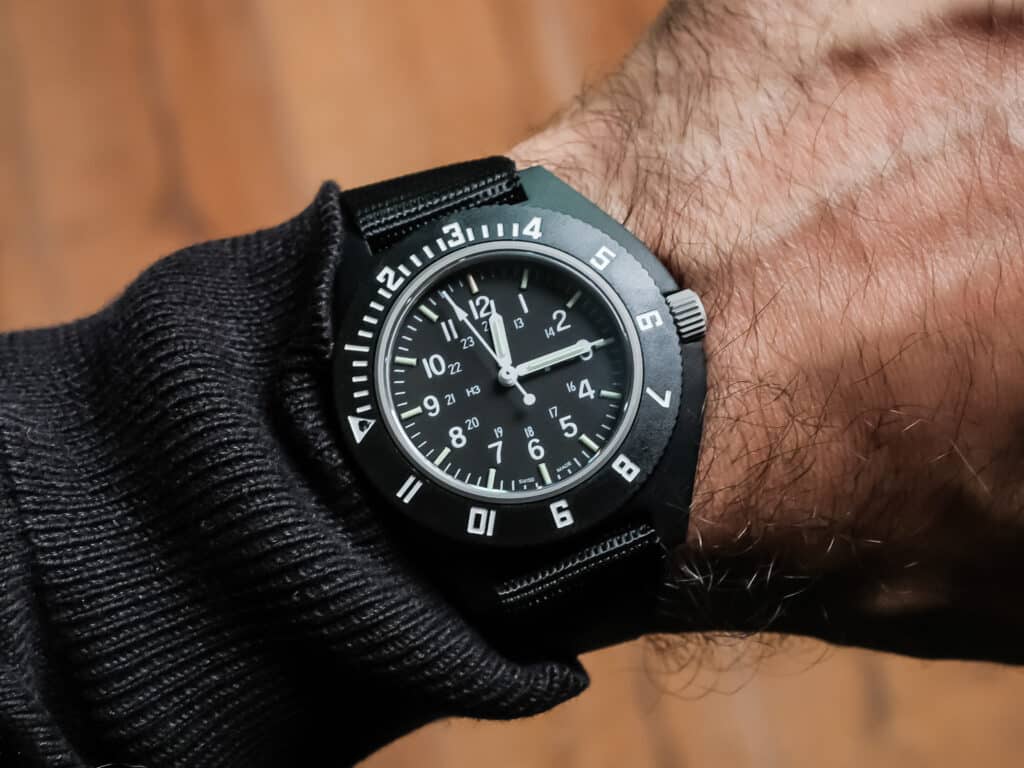
The dial gives us a high-contrast 12- and 24-hour scale with individual minute hashes sandwiched between tritium tube markers. To me, this is the ideal layout for the Navigator, even though some enjoy the various models co-branded with military service branch emblems. It’s honestly hard to lose yourself in this dial. And besides something like a Type A dial Flieger, this is one of the most legible pilot watches you can get your hands on.

Movement
Inside the Marathon Navigator is a high-torque ETA F06 quartz movement. The general theory is that a high-torque movement is selected to handle the added heft of tritium gas tubes on the hands. Like any reasonable spec on a military watch, this is a durable and no-nonsense approach to timekeeping for the Marathon. Plus, with the new battery hatch, “servicing” the watch really just means popping that thing open with a nickle and tossing in a new 371 cell. I wouldn’t have it any other way if I was looking for a solid grab-and-go piece with such a low cost of service. I’m writing this practically with tears in my eyes, as I prepare to send another, more complicated and expensive pilot chronograph for servicing. I should’ve just stuck with the Marathon.
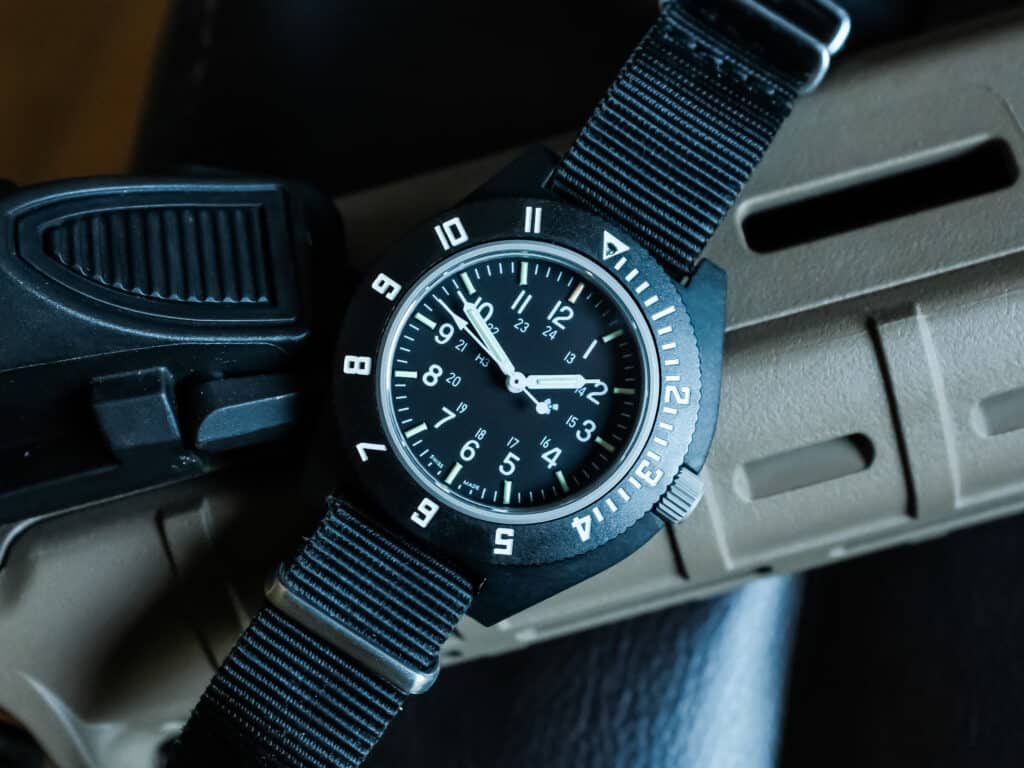
These days, brands like MkII offer a similar design in the Paradive with a NE-15 movement. While watches like that still tempt me, I think a quartz movement will always be more appealing in the context of watches like the Marathon. Marathon also offers a range of other mil-spec models available with both quartz and automatic mechanical movement. I’m sure the quartz movement also plays a part in keeping things light, which is compounded when you pair the watch with lightweight nylon straps through the fixed spring bars. It’s pretty much the only option you have in this case with the Marathon Navigator Gen 2.
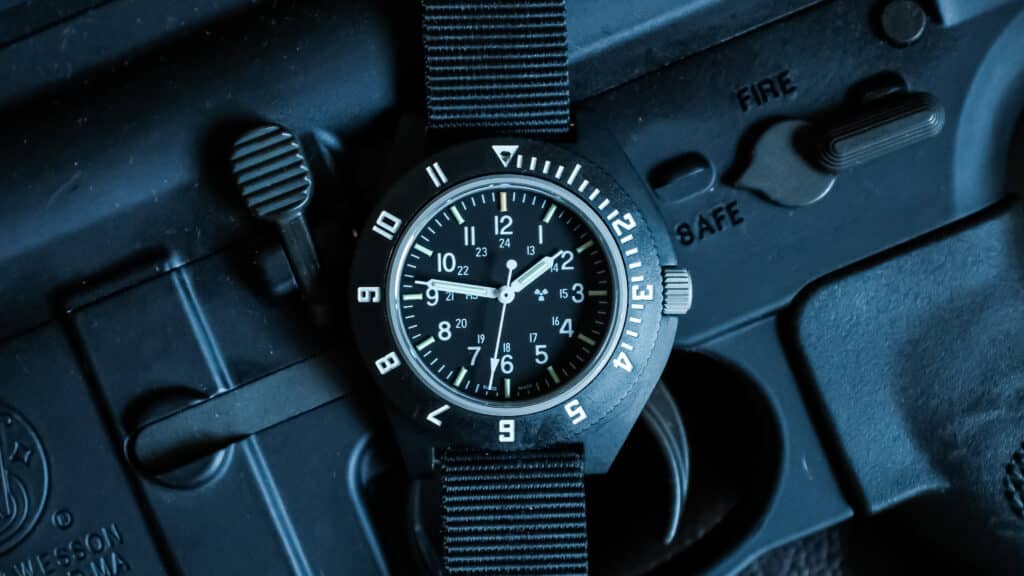
Final Thoughts
I’m really glad that Marathon still offers this version of the watch alongside the newer stainless steel model. At $420, I think it’s more of a solid deal compared to some other low quality imitators that often try to charge more. It’s one of the lowest barriers to entry in the world of mil-spec watch collecting—even easier to get into than some of the CWC divers I love so much. The pricing combined with the features makes this one of my favorite sub-$500 watches ever and I think anyone that’s into pilot watches should give it a chance if they’re really curious.

You can learn more about the Marathon Navigator collection on the brand’s official site.

Co-Founder & Senior Editor
Michael Peñate is an American writer, photographer, and podcaster based in Seattle, Washington. His work typically focuses on the passage of time and the tools we use to connect with that very journey. From aviation to music and travel, his interests span a multitude of disciplines that often intersect with the world of watches – and the obsessive culture behind collecting them.
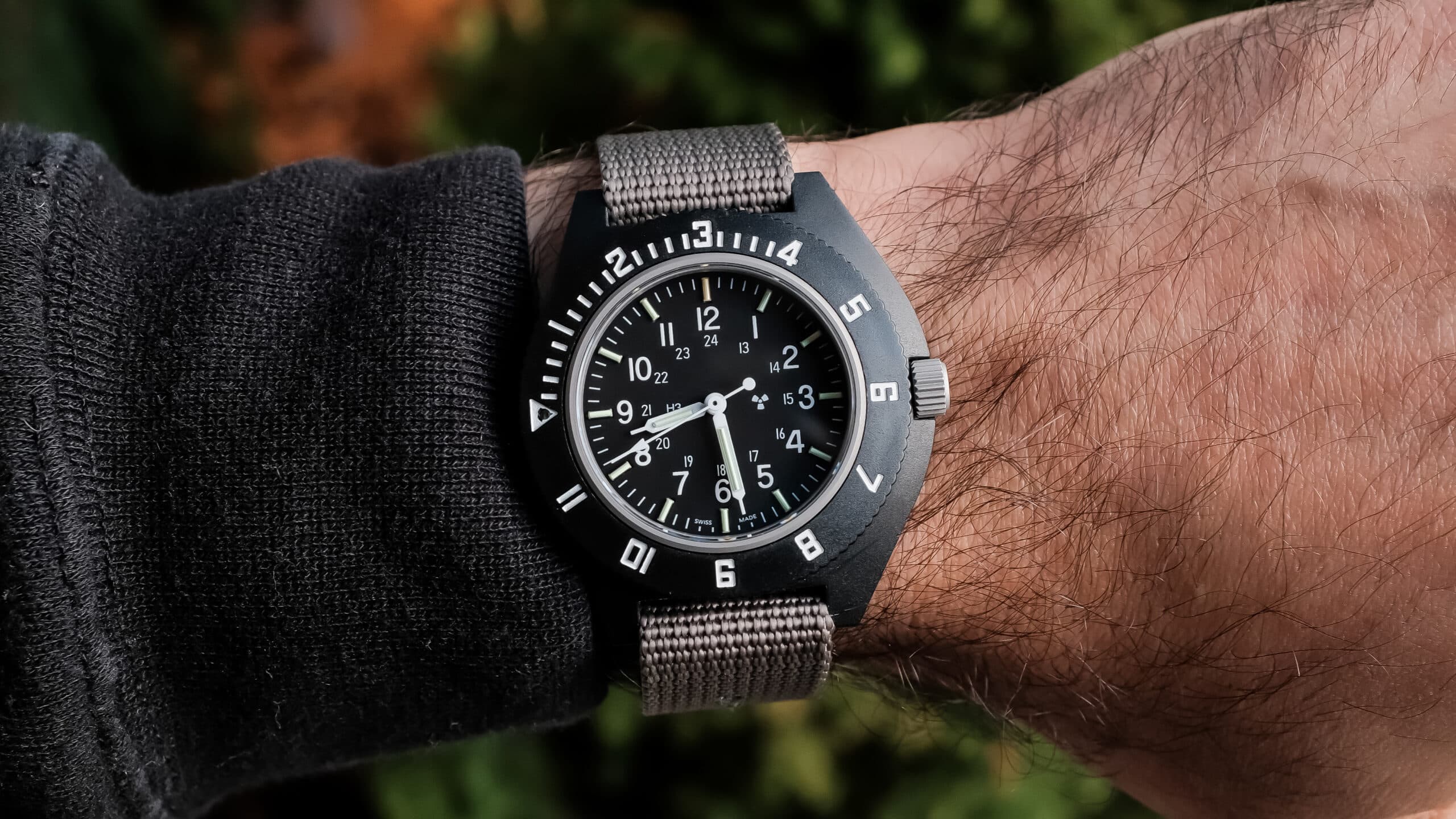
S&W AR with Magpul FDE furniture…more gun pics!
Good eye 😉
This is a really well done option. I’d go for the one with a date window.
I’m a flight test engineer. My grail pilot watch is the Damasko DC82 with a 12 hour bezel insert with the orange chrono hands on an orange robby strap. I managed to pick up that watch about 6 months back as a gift to myself following a major promotion. It is perfect. Reads like a 3 hand watch, has a 1 hour chrono that reads better than a traditional chrono, the bezel can function as a second 60 minute timer and to give UTC time. Plus it is so hard it hasn’t scratched and is anti-magnetic.
All that I need.
We were issued these watches when I was in the 82nd airborne division in Afghanistan. I had no idea this “plastic” watch was anything special so I beat the hell out of it and threw it away as I left county. Wish I had that one back, haha.